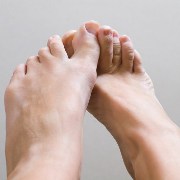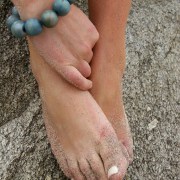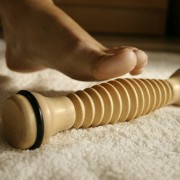Dr. Anthony describes plantar fasciitis and shares how it is treated.
Dr. Anthony:
My name is Jeff Anthony. I am a physician in Family Practice and Sports Medicine. I am one of their managing partners. I have been there for about 24 years. We do family practice as a primary care physician, but we also do sports medicine. We take care of a lot of different teams in San Diego.
I am down at the Olympic Training Center. We take care of San Diego State University. We take care of San Diego Christian College. We are involved with Grossmont College. We oversee the care of seven different high schools, and we take care of lot of local events–the three-day breast cancer walk. Michelle Look in our practice is the director of that, so we help out with that. We help out with Rock & Roll Marathon coverage, and a lot of triathlons. So we do see a lot of sports medicine from the high school level all the way up to the Olympic level.
Plantar fasciitis is essentially a tendonitis of the fascia, which is similar to a tendon that connects the toes back to the heel, and so that fascia is strapped from the toes back to your heel bone, and it essentially maintains your arch. And if you overdo something, “too much too soon” is the idiom that we use, if you overdo something, then you can injure that fascia and that’s what we term plantar fasciitis.
Usually the discomfort is right around the heel bone which is where it inserts upon. So we treat it like a tendonitis. Any time you have a tendonitis, you are going to get inflammation and microdamage to that fascia or that tendon, and so we need to address that. So, the way we treat it is number one is, we want to decrease the aggravating activities as best as we can. So if you got it because you haven’t run in three weeks and you go out for a five-mile run, then you are going to cause plantar fasciitis.
So we want to decrease the aggravating activities so we decrease our running, and then we ice it, and the purpose of ice is to decrease the inflammation around there, decrease the spasm around there and increase the deeper circulation. We ice it for about 15 minutes, two or three times a day.
Number two is we want to stretch it. Like any tendonitis it will contract when there’s a lot of spasm around there and lot of pain, and we need to stretch that out so that we can increase the circulation to that area. So the stretching in the plantar fascia is two-fold; number one is to stretch the plantar fascia itself. We can do that by using a tennis ball. You step on the tennis ball and you rock your foot back and forth to kind of massage that plantar fascia. You have to be careful not to go on the heel because that’s where the inflammation is and that will cause discomfort.
So the tennis ball to massage the plantar fascia is number one. Number two is we need to understand that the plantar fascia is continuous around the heel bone up into the Achilles into the gastroc muscle. So we also need to stretch your calf muscle, the gastroc and the soleus, and you can do that by putting your foot up on a curb and letting your heal sink down, keeping your knee straight and that can stretch your Achilles tendon and the calf muscle.
So first is icing it, number two is stretching it, and then we want to again, decrease the things that make it worse. So one of the worst things for plantar fascia is you get up in the morning–that’s when it hurts the worst and you walk on a tile floor or a hardwood floor. So you need to make sure not to walk barefoot. We want to cushion that calcaneus or cushion the heel bone as best we can.
So number one is, we don’t walk barefoot. Number two is we start to get little cushions or pads in our shoe, and you can get those over-the-counter. There are Tuli heel cups, there are gel pads, there’s all sorts of different cushions that you use on the calcaneus to make it so that where the inflammation is, doesn’t keep pounding on the floor.
Along with that is that the condition can be worse if you are what we call pes planus, or if you are flat-footed, and if you are flat-footed it puts some more pressure there, and so if we, if we support the arch with an arch support, you can again, those are over-the-counter--you can use the Doctor Scholl’s, you can use Superfeet--any type of support for the arch will help take some of the pressure off the plantar fascia. So along with the heel cup, if we have an arch support then that will help that.
Good shoes are essential. If you are wearing high heels then that’s going to aggravate it, especially if they are hard high heels because that every time you walk you have that trauma right on the calcaneus which will keep aggravating this condition. So we need to wear a softer shoe, hopefully not a high heel, and put the pads into that shoe, and that’s the mainstay of treatment of that. If that doesn’t work, we can go further.
About Dr. Anthony, M.D.:
Dr. Anthony joined our practice in 1987 and is Board Certified in Family Practice and Sports Medicine. He is a Team Physician for the US Olympic Training Center, San Diego Christian College and Santa Fe Christian High School. He is an Assistant Clinical Professor at the University of California, San Diego School of Medicine, adjunct professor at San Diego State University, and the primary care physician for the Alvarado Spine Institute.
Visit Dr. Anthony at Alvarado Hospital










